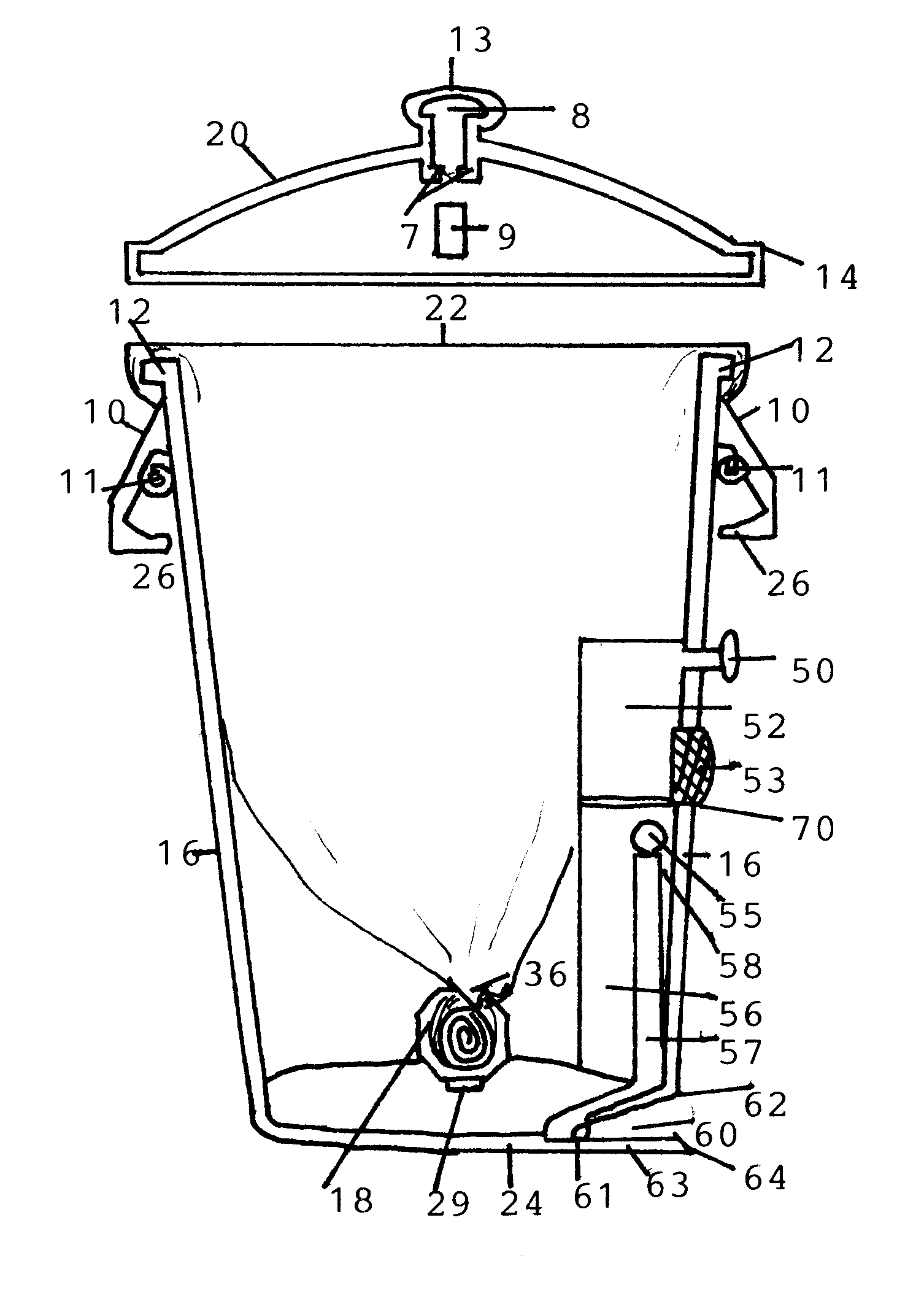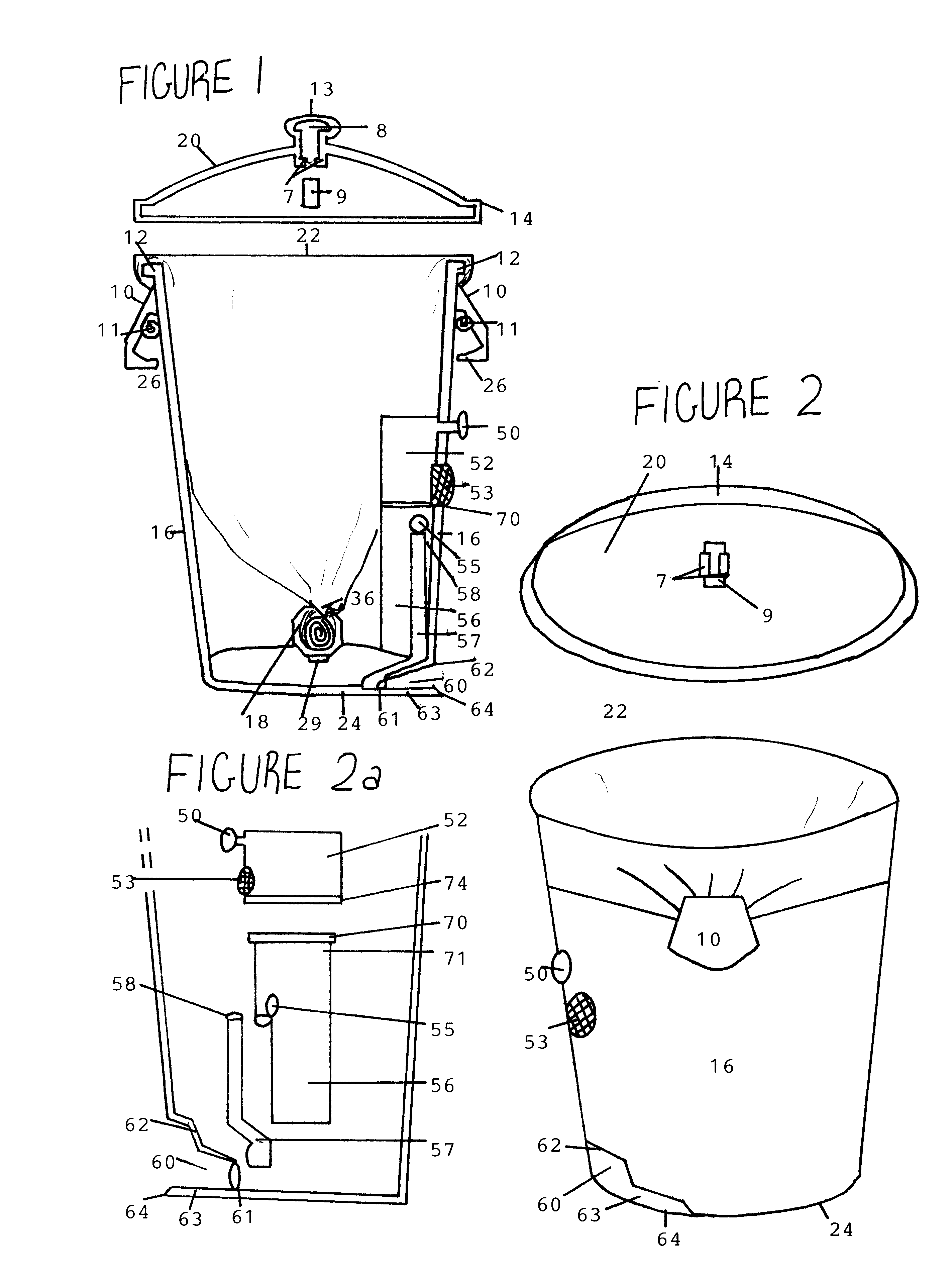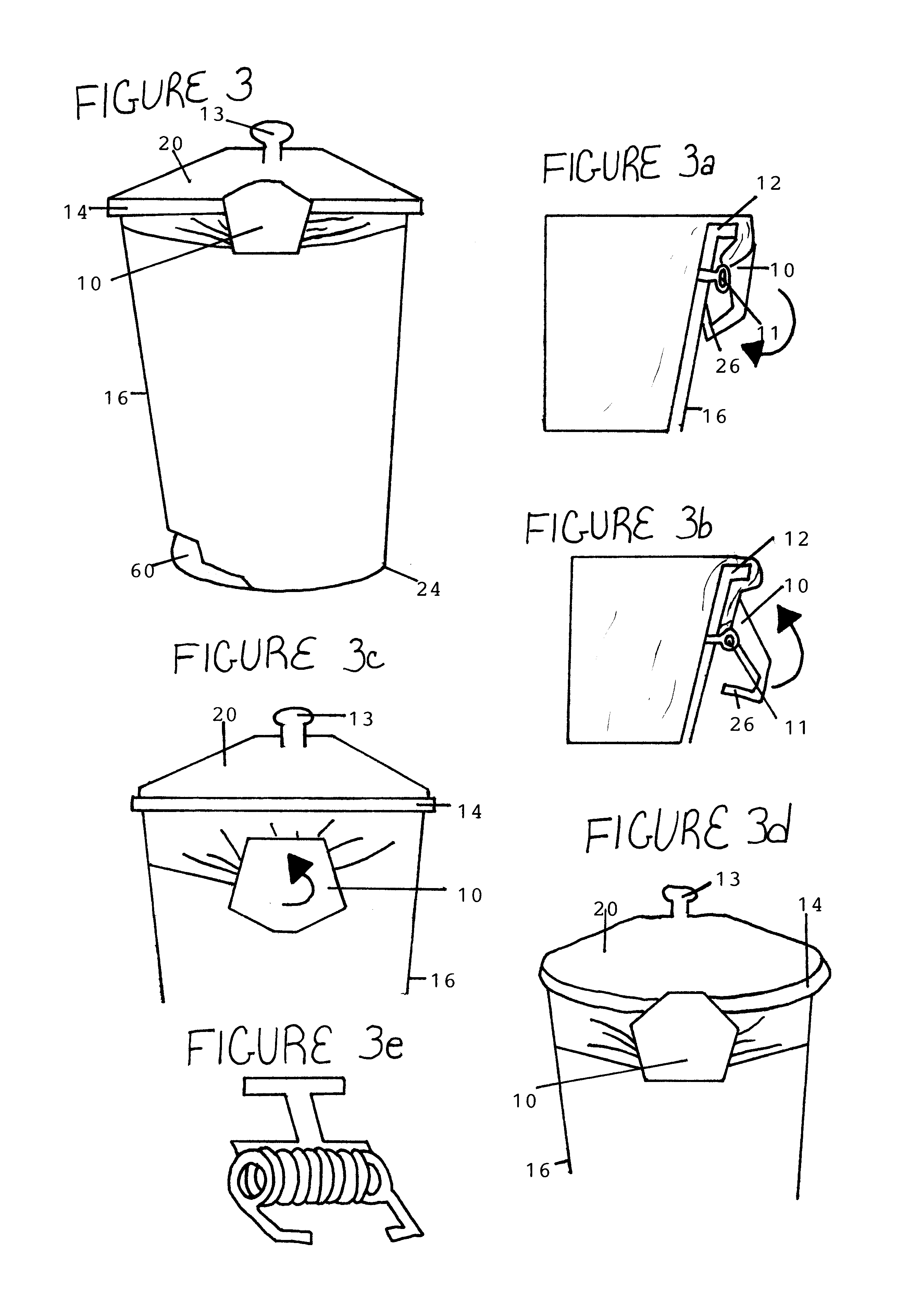Waste receptacle with swept debris pick up and features to maximize convenient use of receptacle liners
a technology for receptacles and waste, applied in the field of receptacles, can solve the problems of not being able to conveniently overturn the receptacle, not cleaning, and not neatly securing the excess top portion of the receptacle lining,
- Summary
- Abstract
- Description
- Claims
- Application Information
AI Technical Summary
Benefits of technology
Problems solved by technology
Method used
Image
Examples
Embodiment Construction
The versatile dispenser 18 has a second embodiment taught in this invention. The second embodiment of the versatile dispenser is for dispensing a roll of liners outside receptacle. The second embodiment of the versatile dispenser is the same dispenser as the versatile dispenser 18 with added modifications. The modifications I describe will define the second embodiment of the versatile dispenser that is named the attachable dispenser 80. The attachable dispenser 80 has a different type of opening at its top portion for dispensing liners FIG. 5. A recess opening for dispensing liners. A portion of a pair of sidewalls to the attachable dispenser 80 extend past this recess opening to join together near a closed end of a closed end of the attachable dispenser that is joined to the sidewalls at this end portion. A open end of the attachable dispenser 80 is the same as a open end of the versatile dispenser 18. The two dispenser lids are different. A enclosure lid to attachable dispenser 80...
PUM
 Login to View More
Login to View More Abstract
Description
Claims
Application Information
 Login to View More
Login to View More - R&D
- Intellectual Property
- Life Sciences
- Materials
- Tech Scout
- Unparalleled Data Quality
- Higher Quality Content
- 60% Fewer Hallucinations
Browse by: Latest US Patents, China's latest patents, Technical Efficacy Thesaurus, Application Domain, Technology Topic, Popular Technical Reports.
© 2025 PatSnap. All rights reserved.Legal|Privacy policy|Modern Slavery Act Transparency Statement|Sitemap|About US| Contact US: help@patsnap.com



